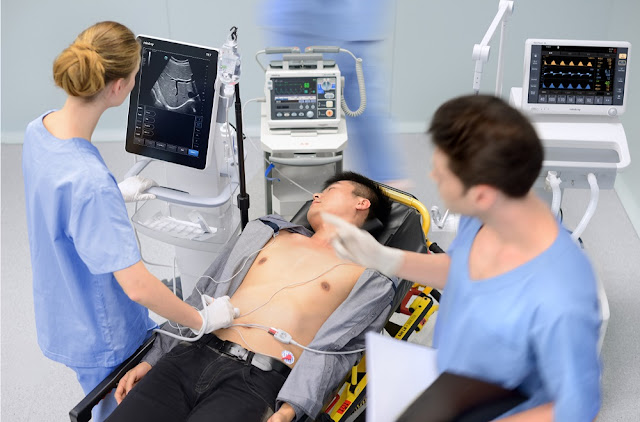Telehealth can be defined as the delivery of healthcare services such as virtual visits, consultations, and remote monitoring through digital information and communication technologies such as mobile devices and computers. Telehealth has expanded the reach of medical services in remote and low-resource settings and has provided access to all across the globe. Telehealth leverages technology-based virtual platforms to deliver various aspects of health information, prevention, monitoring, and medical care. Over the recent past, telehealth has emerged as the fastest growing sector of healthcare with telemedicine at its core. Telemedicine can be defined as the practice of medicine through remote electronic interface. Telehealth aims to eliminate transportation costs that can be a burden to patients of low socioeconomic status and has the potential to improve health literacy by providing patient education and reduce hospitalization by promotion medication adherence.
One of the major applications of telehealth is the
reduction of health disparities with limited access to physician. This could
enable delivery of advanced healthcare facilities in rural areas where lesser
number of physicians serve. In addition to improving access to healthcare
facilities, telehealth is expected to reduce financial burdens on the health
care systems of the countries. Telehealth and its related-technology can reduce
referrals, streamline and optimize medical evaluations and tests, and reduce burden
of certain preventable diseases. Increasing focus and emphasis on patient
satisfaction, provision of efficient and quality care to patients, and minimal
costs have led to large implementation of telehealth services. COVID-19
pandemic has significantly accelerated the adoption of telehealth services amid
increasing concerns regarding risk of infections from face to face clinical
interactions. Increasing research activities have been carried out to
understand the impact of telehealth on the healthcare sector and its role in
expanding access to healthcare facilities.
In a bid to understand other impacts of telehealth, researchers
from the Ohio State University Wexner Medical Center in a May 2022 study found
that telehealth appointments saved over 2.2 million gallons of gas for patients
since the beginning of the pandemic. The Ohio State University Wexner Medical
Center built a dashboard to estimate the impact of telehealth on the
environment and through examination of reduced travel enabled by virtual
visits, the researchers from the IT and sustainability team calculated use of
gasoline and carbon emissions. The IT and sustainability team collaborated with
a regional transportation authority to calculate the travel distance, usage of
gasoline, and carbon emissions avoided by the patients.
Free
Sample Copy Available@ https://www.emergenresearch.com/request-sample/893
In May 2022, MeMD, Walmart’s telehealth company,
announced the launch of a virtual care diabetes program that is aimed at
helping individuals improve diabetes management. The initiative is called the
Walmart Health Virtual Care Diabetes Program and is developed for employers and
payers as a standalone offering or a as a part of the comprehensive telehealth
program. The program combines personalized diabetes education, behavioral
health awareness and counselling, patients can connect with licensed medical
provider to manage their lifestyle and symptoms. Main aim of the program is to
identify and bridge the gaps in care and depression risks and allow scheduling
of a follow-up visit with licensed behavioral health therapists to address each
area of diabetes.
Key companies operating in the telehealth
market are investing heavily in developing robust telehealth platform to
improve healthcare delivery and patient experience. Major companies operating
in the market include Philips N.V. (Netherlands), Medtronic, GE Healthcare,
Cerner Corporation, Siemens Healthineers, Cisco Systems, Inc., Teladoc Health
Inc., American Well, AMC Health, MDLive, Doctor on Demand, Medvivo Group Ltd.,
Asahi Kasei Corporation, Iron Bow Technologies, Telespecialists LLC, GlobalMed,
MedWeb, IMediplus Inc., Vsee, Chiron Health, and Zipnosis. In May 2022, The
Department of Health and Human Services (HHS) announced award of USD 16.3
million to enhance and expand telehealth care and infrastructure and capacity
of Title X Family planning clinics across 26 states, one U.S. territory, and
one freely associated state.







